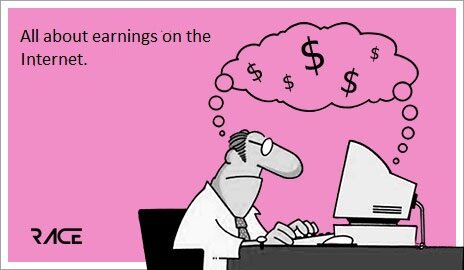The True Power of Evergreen Content - A Case Study

There is a very good chance anyone reading this is already familiar with the concept of evergreen content; or content that is perpetually relevant. Most of us have experienced at least one piece of content that holds timeless in the usefulness of its information.
Creating content that is just as useful five years down the road as it was the day it was published is not easy, but it’s possible.
Think of content that is more or less the opposite of news, from a pure informational standpoint this content offers value that will not diminish... at least, not much.
What Makes Content Evergreen?
It needs to provide information that is not likely to change in the near future, a reference point if you will. When thinking of examples, immediately I think of some ‘How To’ posts:
How To Tie Your Shoes
Teach a Child How to Ride a Bike
How To Fix a Flat Tire
Certainly these may be very different in 50 years (perhaps even 10 years?), but they offer long term value in terms of information.
These opportunities do not exist within every niche; however, evergreen content doesn’t need to be timeless to be evergreen, at least not in my opinion; it simply needs to stand the tests of time.
I believe if a piece of content is created that is still useful 1+ years later, even if not completely accurate anymore, it can be deemed evergreen – especially if it's related to technology.
Part of building evergreen content is updating it so it stays current and relevant for as long as possible.
Think of:
SEOmoz: Algorithm Change History, Search Ranking Factors, Beginner's Guide to SEO
What is Celiac Disease | National Foundation for Celiac Awareness
Illuminati | Wikipedia
Now think of a pine tree with no sun or water -- the needles turn brown, become brittle, and eventually fall off and the tree dies. Sustainable content is no different; it requires maintenance to stay alive, to remain useful.
Each of the posts above are updated as soon as new relevant information becomes available to allow the content to better serve its purpose.
When the information starts to grow old (or weak) spend the time, put in the research, and update what is outdated... this is not always possible, but in many cases you can repurpose your content to still serve a valid need.
In this post I hope to provide you with a close look at the true impact of creating evergreen content. We will explore an evergreen library from someone who has put creating evergreen content into practice.
Putting Content to Work For You
Jason Acidre continually leverages his library of evergreen content to consistently acquire new traffic to his website. He has been able to continually send new traffic to his posts years after their initial publication through a combination of inbound marketing channels. The information is researched, accurate, and relevant to his target audience.
This is also a two-way street.
In return for providing value to his audience, Jason gets to reap the benefits of continuous traffic and brand authority growth.
Similar to the above examples, here are some of my favorite pieces of evergreen content:
Discover The 90 / 10 Principle | Steven Covey
Marathon Training for Beginners | Marathon Rookie
How I Did 200 Push-Ups | 30GO30
Migraine Symptom Map | Migraine.com
If you look at Jason’s posts you will notice a plethora of comments, high social share counts, and a natural profile of inbound links. This is due to the specific set of benefits factors offered from his content:
Life-cycle: Pre-established content so all new visitors after initial publication are greeted with existing authority signals: comments, social shares, and high search engine rankings.
Links build on themselves; evergreen content is a source for continued reference and will continually be linked to.
Larger citation potential from press channels if content is in under-served or under-saturated industry
Reference point for future citation on additional articles on same topic or closely related context
Brand establishment and awareness
To consistently drive traffic to evergreen content depends on:
The amount and quality of referring links (particularly linking pages that are also ranking for keywords that have substantial monthly search volume).
If the content/page is ranking for keywords that are generally searched by your target audience.
The page’s ability to attract new traffic through social shares (which mostly involves the title and the body of the content – if it’s compelling, relevant and up to date – as well as the visibility of the social sharing buttons).
Here's an example of one of Jason's posts from last year about eCommerce SEO strategies (first published on March 15, 2011) which has generated 4,556 unique pageviews in the first year:
The content is still continuously attracting natural links to it even after a year… in large part due to
the visibility from readers who have shared the content via social networks and
blogs that have linked to it (even a recent link from SEOmoz).
Google has continually sent search traffic to it as its PA has grown over time.
The traffic to this post nearly doubled in the first 18 months (from March 15, 2011 to August 15, 2012) reaching 8,527 unique pageviews; primarily due to the three factors mentioned above...
Whether your traffic is search or referral driven, true evergreen content will continue to organically attract links as it continues to provide value to new readers.
New Traffic to Old Content from Social Shares
Depending on the authority and influence of the people sharing your content, a simple social media share can send large spikes in traffic.
Look at the traffic to this post published a year ago (August 30, 2011) that came six months later when someone shared the link on Pinterest:
In the above case the largest acquisition of traffic came six months after the post was first published, showing that evergreen content can continue to drive massive amounts of new traffic months or years after they are published.
For instance, another one of Jason's older posts, which also ranked well earlier in 2012 for the search phrase "link prospecting," hit the wire with some momentum; generating 1,796 unique pageviews in its first 30 days.
In the following 60 days the post continued to generate impressions at about a 50% reduction, but maintained some momentum, creating another 1,259 unique pageviews:
Continued Ranking Improvements Mean More Traffic
Sometimes when a piece of content adds enough value it will snowball, so as the word spreads, it gains links and popularity and in return increases in search rankings, and traffic continues to build...
In the case below unique pageviews to the post increased by 41.74% in the period from three to six months after publication over the first three months:
Link Momentum & Scrapers
Link velocity depends greatly on exposure, as Jason puts it:
"The initial wave of links usually depends on the impact on different social media networks. I have posts that receive 20+ natural, earned links within their first week of publication, like this, this, and this.
I believe the amplification of natural links depends on the exposure received through different traffic channels like social networks, communities and forums, blog/newsletter mentions, and organic rankings."
Here is a chart (extracted with the help of Ahrefs) that shows the link graph for the eCommerce post mentioned earlier:
One important item to note on this chart is that the link spike in May 2012 was due to content farms scraping a post from SEOmoz that linked to Jason's post from March 2011.
He believes that "the key" to evergreen content "is to make sure you can continue to satisfy visitor's expectations."
What About Comment Velocity
Comments are often used as a measure of audience engagement, so how do evergreen posts fair in continuing to generate comments?
In Jason's case, they do pretty well.
The majority of comments are received within the first 30 days, but his posts tend to continue to attract comments for the life of the post. Here is an example where the ratio of comments from the first 30 days compared to the next six months is 43:22. Still pretty good...
Social Share Velocity
Share velocity depends greatly on the type of post and the channels it is distributed across.
Using the two posts mentioned before as examples, the 'SEO for eCommerce' post out-performed the 'Link Prospecting' post receiving over 200 retweets in the first two months, since this post was able to gain links that sent traffic from a large number of sources (including SEOmoz).
The link prospecting post still did well, receiving over 100 tweets in the first month, but only around 60 in the second month.
*Rough estimates based on data from Topsy
Evergreen Content for Conversion
Evergreen content has not only helped Jason build his traffic and his brand, it has had a direct impact on his SEO consulting business.
For instance, the eCommerce SEO post assisted with the generation of approximately 14 new service leads, converting readers into prospects at a rate of 1.35%
In Conclusion
Evergreen content is powerful for building a brand, building an audience, and building a business.
Looking at the big picture, evergreen content can be used as a foundation for an overall content strategy to create sustainable traffic, brand growth, and increase the authority of your website.
A big thank you to Jason Acidre for being my study subject and sharing so much of his time and data with me.
Thank you for reading and please share your thoughts in the comments.
Source:seomoz.org


















































 Write
Write Talk
Talk
 Call
Call